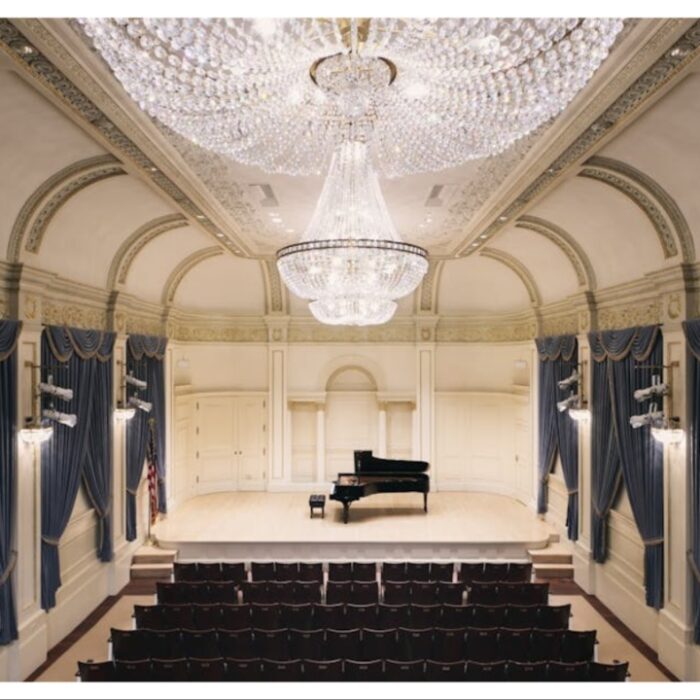
Opéra-Théâtre de Metz 2024-25 Review: Così fan tutte
By Andréas ReyThe Opéra-Théâtre de Metz in co-production with the Fondazione Teatro di Pisa, the Fondazione Pergolesi Spontini di Jesi, the Fondazione Teatro Comunale Luciano Pavarotti di Modena and the Teatro Sociale di Rovigo, presented Mozart’s “Così fan tutte.” A quasi-synthetic opera after the joyful, mischievous and revolutionary “Le Nozze di Figaro” and the dark, deleterious and almost mystical “Don Giovanni,” he takes up the binary structures, fusing the seria and buffa styles, refining the orchestra to the point of giving it the most subtle silky texture, and bringing the recitatives and arias into an almost continuous flow of sound. This is something Richard Strauss, in his turn, would take up.
The opera is also virtuoso in its treatment of voices. His story coincides with every possible combination of different vocal tessituras. Based on six couples, including two swingers, it shows how Don Alfonso (bass) and Despina (soprano) couple, manipulate the Ferrando (baritone) and Fiordiligi (soprano), and Guglielmo (tenor) and Dorabella (soprano) couple. Dorabella is Fiordiligi’s older sister, so she can lean towards mezzo to reflect their age difference. This calls for a very well-balanced vocal line-up, so that no duet, trio, quartet or sextet falls short. One of the greatest qualities of this performance is precisely the more than successful combination of voices, right from the first duets between Italian tenor Antonio Mandrillo as Ferrando and Czech baritone Jiří Rajniš as Guglielmo. The first duet between Norwegian mezzo-soprano Lilly Jørstad‘s Dorabella and Kazakh-born Italian soprano Maria Mudryak also demonstrates the harmony that must hold the work together.
Unfortunately, Ukrainian-Russian singer Ekaterina Bakanova fell ill on February 2nd. Fortunately, however, she was replaced by Maria Mudryak. Although each singer has a recognizable voice, their tessituras are similar. In this story of swinging, any resemblance is welcome. The slightly acidic timbre of Sicilian soprano Francesca Cucuzza as Despina also catches the eye, as does her piquant, mischievous performance, which becomes sympathetically grotesque when she arrives dressed as a notary. The firm voice of Italian bass Matteo Loi as Don Alfonso, which can have an amused tone, insidiously shows that this manipulator is having fun with his friends. He also knows how to be dry when they want to stop the bet, and charming when bribing Despina. Antonio Mandrillo as Ferrando displays a firm, highly articulate and clear voice; Jiří Rajniš as Guglielmo a radiance revealing the youthfulness of his character. The vocal ensemble as a whole is sparkling, lively, harmonious and fluid.
The same is true of the orchestra, which maintains a sure, silky and willingly mischievous conduct. Belgian conductor David Reiland finds the right tempo immediately, neither too fast to let the singers express themselves, nor too slow to keep the tone of lively jest, the élan that unfolds Mozart’s orchestral science as a matter of course. In this way, he keeps the listener continually entertained. We must also salute the work done not only with the strings, which are luminous, fresh and sparkling, but also with the woodwinds, especially the clarinets, Mozart’s favorite instrument, which retain a very appreciable mellowness.
Alongside the voices, Italian director Stefano Vizioli remains flexible. He keeps the protagonists natural and gives them a pleasant sense of humor despite the drama. We witness the scenes of encounters between men and women, whether disguised or not. For example, the poisoning scene, or the scene in which Fiordiligi wants to close the door to the Albanians, while Dorabella and Ferrando are already getting close.
Milo Manara’s costumes are equally well chosen. While Fiordiligi and Dorabella wear light dresses and pastel-colored tights – suggestive garments that are easy to remove – the men in military dresses are white with pink accents. But above all, in Albanian, the suitors are perfectly ridiculous, their turbans drooping at the slightest movement, and they’re not dressed up at all. This makes the farce all the more crude, revealing that the couples weren’t quite as solid as the men thought.
Another great quality of this production is the panel decor painted by Milo Manara. As well as recalling the mural decorations of 12th-century palaces, the Italian cartoonist emphasizes the opera’s eroticism without vulgarity. Zeus, Appolon and a satyr pursue celestial nymphs. Naiads drink at a fountain and rest in a forest. The colors are fresh, bright and joyful. The movements are light. The drapery reveals no genitalia, emphasizing the slenderness of the figures. The nymphs are reminiscent of François Bouchers’ Dianes, while the cherubs are reminiscent of Puvis de Chavannes and Rapahel. The backgrounds are by Hokusai.



